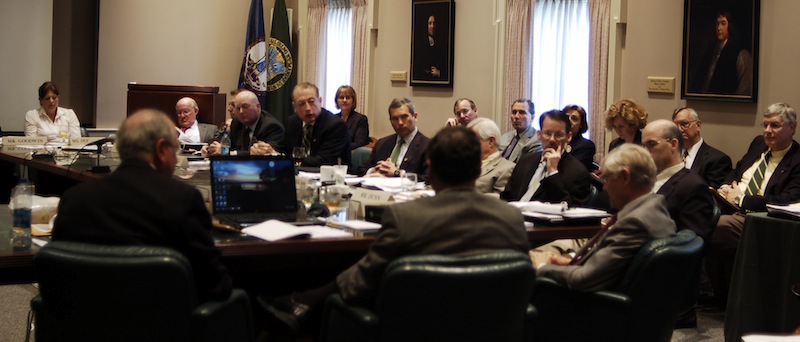Another year has passed, but the College of William and Mary still faces the reality of declining state funds. Administrators are addressing this challenge both by reallocating funds and tuition hikes.
Additional mandatory College contributions toward state employee benefits drove much of the increase in costs this past year. As the state portion of the College’s expenses fell from 14.8 percent to less than 13 percent this year, tuition and fees for in-state students increased by 3.3 percent, or $438, and for out-of-state students it rose by $1,382, or 3.8 percent.
Gov. Bob McDonnell previously called for state colleges to attempt to limit annual increases to 2.7 percent to coincide with cost-of-living increases.
“It was a public statement, and there was no issue there,” Rector of the College Jeffrey Trammell ’73 said of the governor’s request. “The challenge is we’re in a recession, and part of the challenge is how you keep college affordable for the middle-income families, which is what the governor was asking for.”
According to Vice President for Finance Sam Jones ’75, M.B.A. ’80, the governor and the General Assembly greatly helped in keeping tuition hikes low. In addition, the state contributed toward campus renovations despite the drop in its share of the College’s operating expenses.
“We did just get about approximately $1 million in additional money from the state, so that helped us with some of the expenses that we otherwise would’ve had tuition to support,” Jones said. “It was reducing expenditures in one area while increasing those freed-up dollars to use on other things.”
The College has not discussed with the state legislature raising the cap on out-of-state students with the state legislature. Raising this cap would allow the College to raise more revenue without having to raise tuition significantly.
“There are those in the General Assembly we are trying to keep from insisting on a lower cap for out-of-state students,” Trammell said. “But we continue to show them the value and benefits that out-of-state students bring to the College.”
Another option, privatization, has not been contemplated seriously.
“We are still getting $43 million in operating money from the state of Virginia,” Jones said. “Even while the percentage has declined, it is still a significant investment by the state. We still get significant money for the renovations, and so it’s not a discussion we’re having in any type of serious way.”
The budget, adopted at a Board of Visitors meeting in late April, also contained increases in tuition and fees for the College’s graduate programs.
“Unfortunately, sometimes tuition hikes are what are necessary to help maintain what we are as an institution,” Student Assembly President Curt Mills ’13, who currently serves as the student representative on the BOV but was not a member of the board at the time the decision was made, said in an email. “However, I fully plan to ensure the BOV is not reckless with hikes, help them see the student cost of hikes, and do everything I feasibly can to stave off more hikes. Combined with the reasonable cost of living of Williamsburg, W&M remains a strong, more cost-effective alternative to many of the elite private institutions.”
Editor’s Note: This article was edited at 4:48 on September 1, 2012 to correct the status of Curt Mills on the Board of Visitors.

